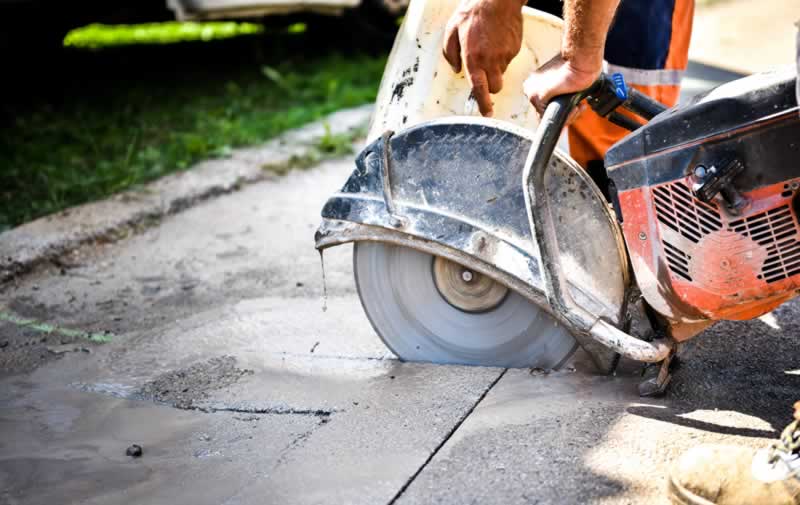Mastering the Art of Safe Concrete Cutting: Essential Steps for Effective Execution
When it comes to safe concrete cutting, there are several steps and precautions you should follow to ensure a successful and injury-free project, especially in a bustling Melbourne suburb like Malvern. Let’s delve into these steps:
- Prepare the Site: Before beginning, clear the site of clutter and cover items that could be damaged by dust or concrete fragments. It’s also important to have a clear passage for moving rubble out of the site.
- Select the Right Tools: Depending on your project’s scale, you may need tools like an electric circular saw with a diamond or abrasive blade, a sledgehammer, a jackhammer, a large pry bar, a shovel, bolt cutters for wire mesh, and a demolition saw for rebars.
- Use Proper Safety Equipment: Safety equipment is crucial. This includes goggles, thick gloves, ear protective gear, a dust mask or respirator, steel-toe boots, and clothes that cover you adequately. A straight-edge piece of wood and chalk for line marking are also necessary.
- Mark the Cutting Area: Clearly delineate the area you plan to cut using colored chalk and a straight-edge guide.
- Cutting the Concrete: Adjust your concrete saw to the appropriate depth (usually starting at 50mm) and cut along your marked lines. To minimize dust and prevent overheating the blade, sprinkle water around the cutting area. For deeper cuts, adjust the blade and repeat the cutting process.
- Breaking the Concrete: After cutting, use a jackhammer to break the concrete, starting from an inside corner. The weight and movement of the jackhammer are usually enough to break the concrete.
- Removal of Concrete Fragments: Use thick gloves for manual loading of concrete pieces into sacks and a shovel for smaller fragments.
- Final Checks and Clean-Up: If necessary, use the jackhammer again to level any uneven areas. Once satisfied, clean the site, tools, and safety equipment, restoring the area to its original state.
Safety practices such as monitoring the saw rotation, dealing properly with interruptions, and reducing concrete dust are essential. Always ensure your electrical equipment is grounded, especially when using wet cutting methods.
Remember, concrete cutting can be complex, and for more intricate projects in Melbourne, engaging a professional service like Bullseye Concrete Cutting Melbourne can ensure safety and efficiency. These professionals are equipped with the right tools and expertise, making them ideal for handling diverse cutting needs.
Adhering to these steps not only ensures the safety of the workers but also contributes to the precision and quality of the concrete cutting task. For detailed information and assistance on concrete cutting, you might consider contacting experts in this field, such as Bullseye Concrete Cutting Melbourne.
Frequently Asked Questions on Safe Practices for Concrete Cutting
Why is Site Preparation Crucial for Concrete Cutting? Proper site preparation, including clearing clutter and covering items vulnerable to dust or debris, is essential for a safe and efficient cutting process.
What Tools are Needed for Safe Concrete Cutting? Essential tools include an electric concrete saw with a diamond blade, sledgehammer, jackhammer, pry bar, shovel, bolt cutters for wire mesh, and a demolition saw for cutting rebars.
What Safety Equipment is Mandatory in Concrete Cutting? Safety equipment should include goggles, thick gloves, ear protection, a dust mask or respirator, steel-toe boots, and protective clothing.
How Do You Mark the Area for Cutting? Use a straight-edge piece of wood and brightly colored chalk to clearly mark the area for cutting.
What is the Correct Depth for Initial Concrete Cutting? The initial cut should generally be set at a 50mm blade depth, with adjustments made for deeper cuts.
How to Manage Dust During Concrete Cutting? To control dust, especially when dry cutting, use water to dampen the area around the cut or connect a vacuum to the saw.
What Technique is Used for Breaking Concrete After Cutting? After cutting, a jackhammer is typically used to break the concrete, starting from an inside corner.
How Should Concrete Fragments Be Removed Safely? Manually load larger pieces into sacks using thick gloves and scoop smaller fragments with a shovel, adhering to safety procedures.
What are the Steps for Finishing Concrete Cutting Work? After cutting and removal, ensure the area is leveled as needed, clean the site and all equipment, and restore the area to its original state.
How Important is Monitoring Saw Rotation During Cutting? Closely monitoring the saw’s rotation is vital to prevent blade bending and ensure smooth, safe cuts.
How Should Interruptions be Handled During Concrete Cutting? In case of interruptions, always turn off the concrete cutting tool and place it safely to prevent accidents.
Why is Reducing Concrete Dust Essential? Minimizing concrete dust protects workers from respiratory issues and complies with health and safety regulations.
How Should Electrical Equipment be Handled for Safety? Electrical equipment must be grounded and insulated properly, especially when using wet cutting methods, to prevent electrical hazards.
Are There Special Considerations for Cutting Near Walls? Use special saws like toe kick or undercut saws for cutting close to walls, ensuring precise and safe cuts in tight spaces.
What Should be Done in Case of Overcutting? If overcutting occurs, reevaluate the cutting depth and technique, and take corrective measures to maintain structural integrity.

